Web agencies have conducted hundreds of studies in the last ten years, most of which place the average cart abandonment rate at 60-80%. That means that less than 40% of customers who add one of your products to their basket will end up buying it. Whilst it may not be possible to avoid losing any sales at the final hurdle, reducing your Shopify cart abandonment rate is a cheap and efficient way to boost your revenue.
The increase in cart abandonment is partly due a change in how people shop online. The number of different options people explore before making a purchase has risen sharply in the past decade, and most online shoppers abandon at least £30 of products each month. This guide explains how you can turn those abandoned purchases into sales.
Research by the eCommerce research group Baymard highlights some of the main reasons for people abandoning a purchase at the shopping cart. Whilst changing shopping habits are clearly part of the reason for high cart abandonment rates, they are by no means the only factor. Issues like hidden costs and trust have a big impact on conversion rates.

Providing a guest checkout option has always been an effective way to reduce cart abandonment. Alongside that, the offer of free shipping would have convinced over half of those surveyed by Baymard to make a purchase. First, though, you need to know if your Shopify cart abandonment rate is higher than it should be.
If your website is hosted on an eCommerce platform like Shopify, you have built-in analytics dashboards that tell you exactly how many people have abandoned their purchase at the shopping cart stage. For other websites, Google Analytics allows you to see how people are using your website, where they exit your sales funnel and whether your cart abandonment rate is above average.
Checking Your Shopify Cart Abandonment Rate
To check the cart abandonment rate for your Shopify store, open up the Analytics section from your left panel and choose Dashboards. The thing to look for is the Online Store Conversion Rate widget, which should break down your sales funnel into three separate stages.
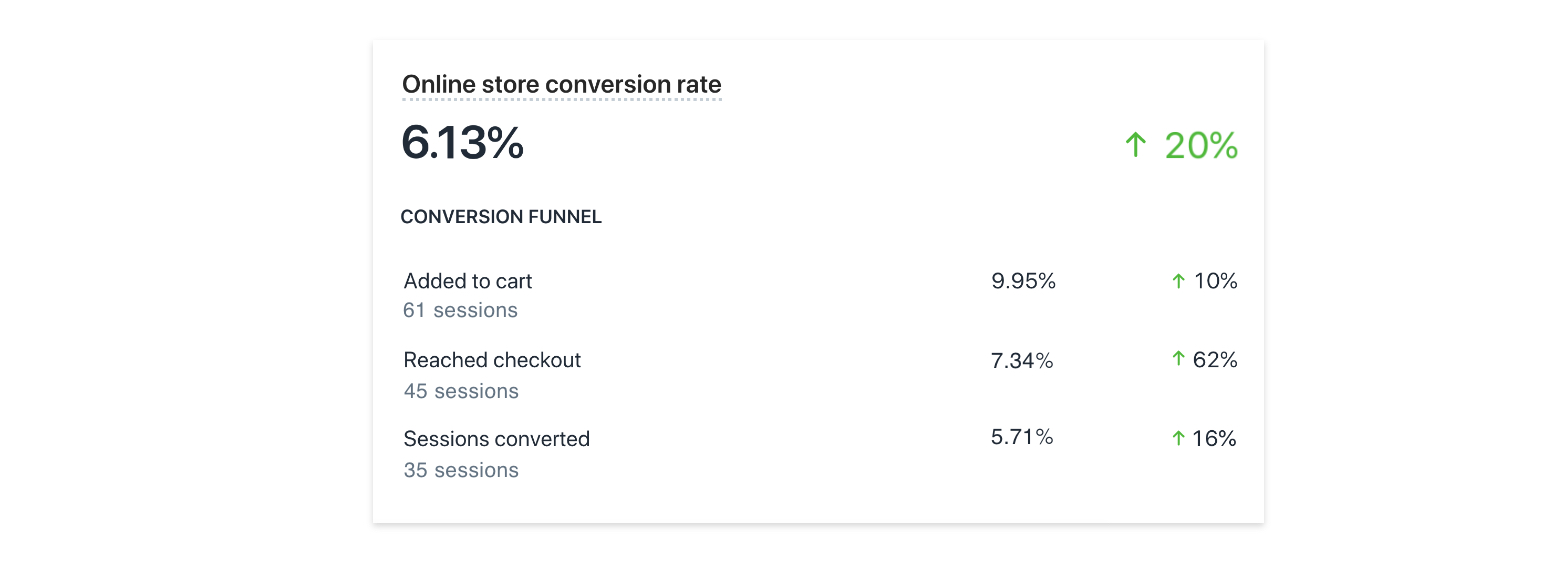
In 2019, the average conversion rate for a Shopify store was just 1.5%. So, with a Shopify Conversion Rate of over 2% and a cart abandonment rate below 50%, your store would be performing above the industry benchmark.
Checking Your Shopify Cart Abandonment Rate in Google Analytics
To see how many people are exiting your website from your basket page, simply open the Behaviour report from the side panel, choose the sub-report Site Content and then click All Pages. This will open up a table showing the “Pageviews”, “Bounce Rate” and “%Exit” for each URL on your site.
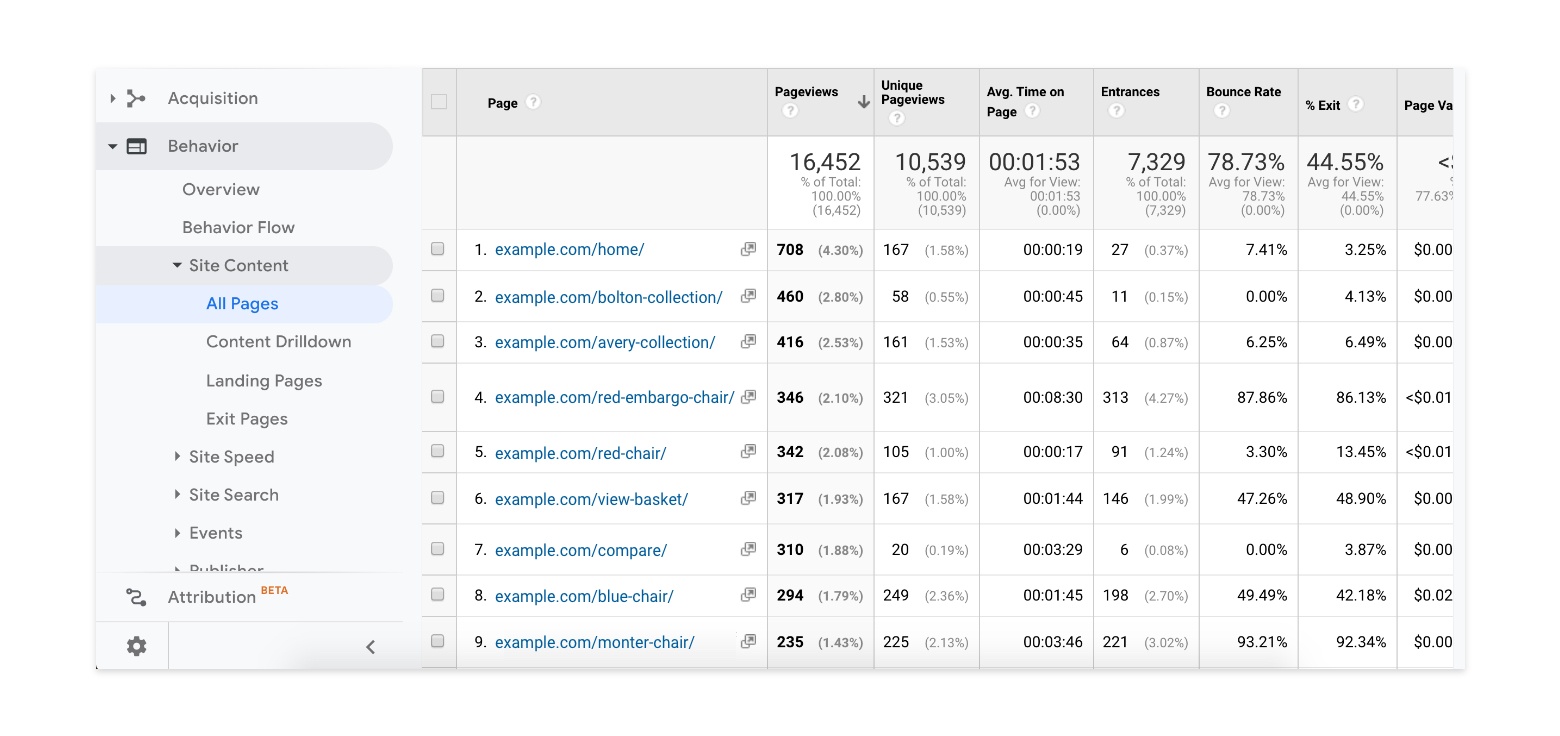
However, this will only show you how many people exited your website from your basket page. To see how many people reached your basket page but then decided not to buy, or to create reports for Shopify Cart Abandonment, you need to create a custom funnel.
Setting Up a Custom Funnel in Google Analytics
Once you have specified your goal, setting up a custom funnel is simple. Simply navigate to the Admin section of Analytics and open the “Goal Settings” for your primary goal. From there you can assign a monetary value to your goal or create a custom funnel.
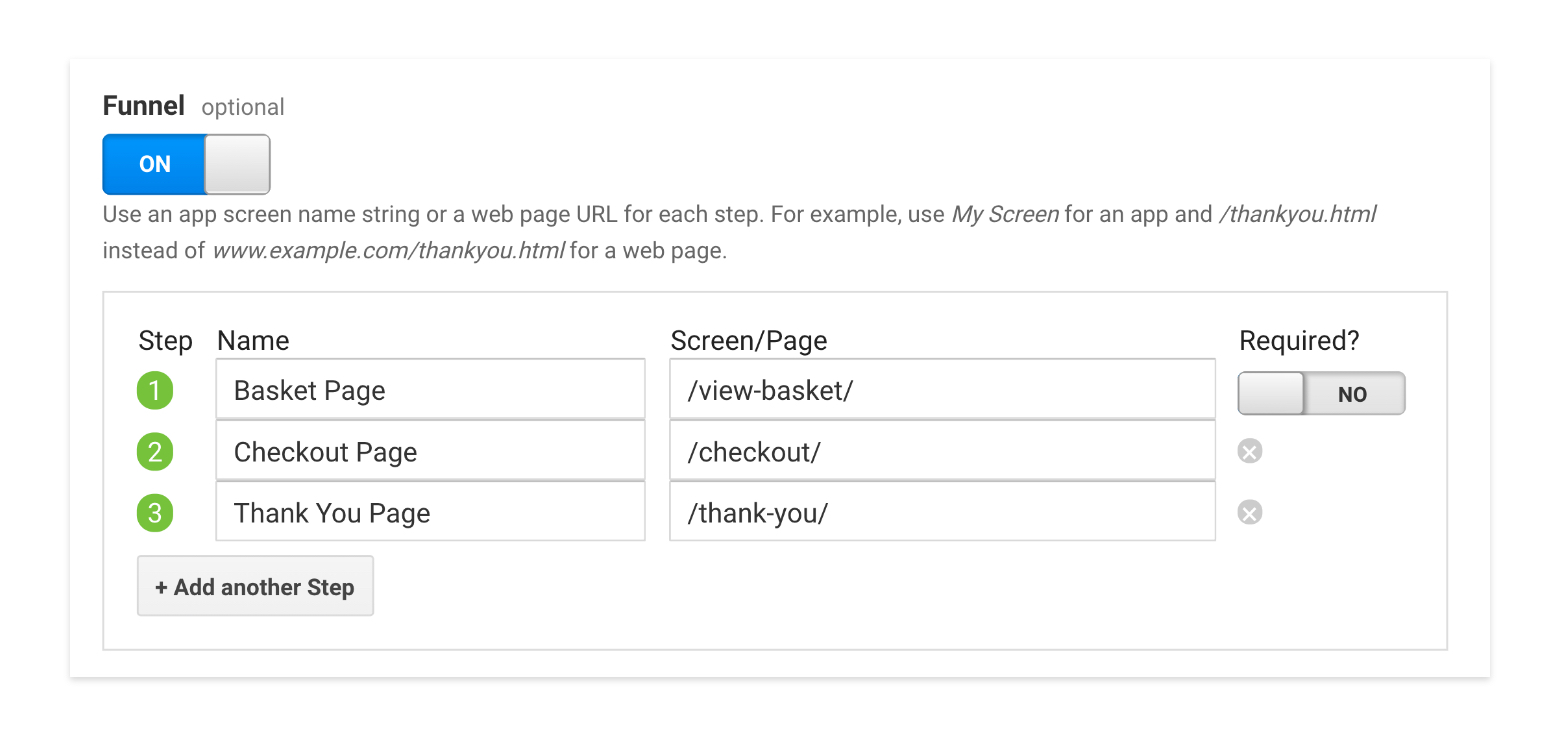 Once this custom funnel has been created, you can access dedicated Shopify Cart Abandonment reports in the “Goals” section of your view.
Once this custom funnel has been created, you can access dedicated Shopify Cart Abandonment reports in the “Goals” section of your view.
Top 5 Ways to reduce your Shopify cart abandonment rate.
The five strategies outlined here will help you to reduce unnecessary abandonment however your website is hosted. They address the causes of cart abandonment identified in the recent Baymard report and apply established principles from the science of consumer behaviour.
How much are your customers being charged for shipping and tax? One of the main reasons for cart abandonment is shipping costs. If your customers are paying $20 for a T-shirt, they’re unlikely to add another $4.99 for shipping.
And, if they clicked on an item that looked like a bargain, adding tax later will break their trust! One of the best ways to reduce shipping-cost related abandonment is to show your customers the full price, and how it breaks down, before they get to the Shopping Cart.
There are a few other things you can do immediately…
- Add an order target and throw-in free shipping when your customer reaches it.
- Include the shipping cost within the item price. A $20 T-shirt with $4.99 delivery feels like a cheap purchase with expensive hidden costs, whereas a $24.99 T-shirt with Free delivery feels like a mid-range purchase with something extra free.
An advanced option is to identify your visitor’s location and then offer location-specific delivery information. Luxury brands use this strategy to reduce their cart abandonment rate.
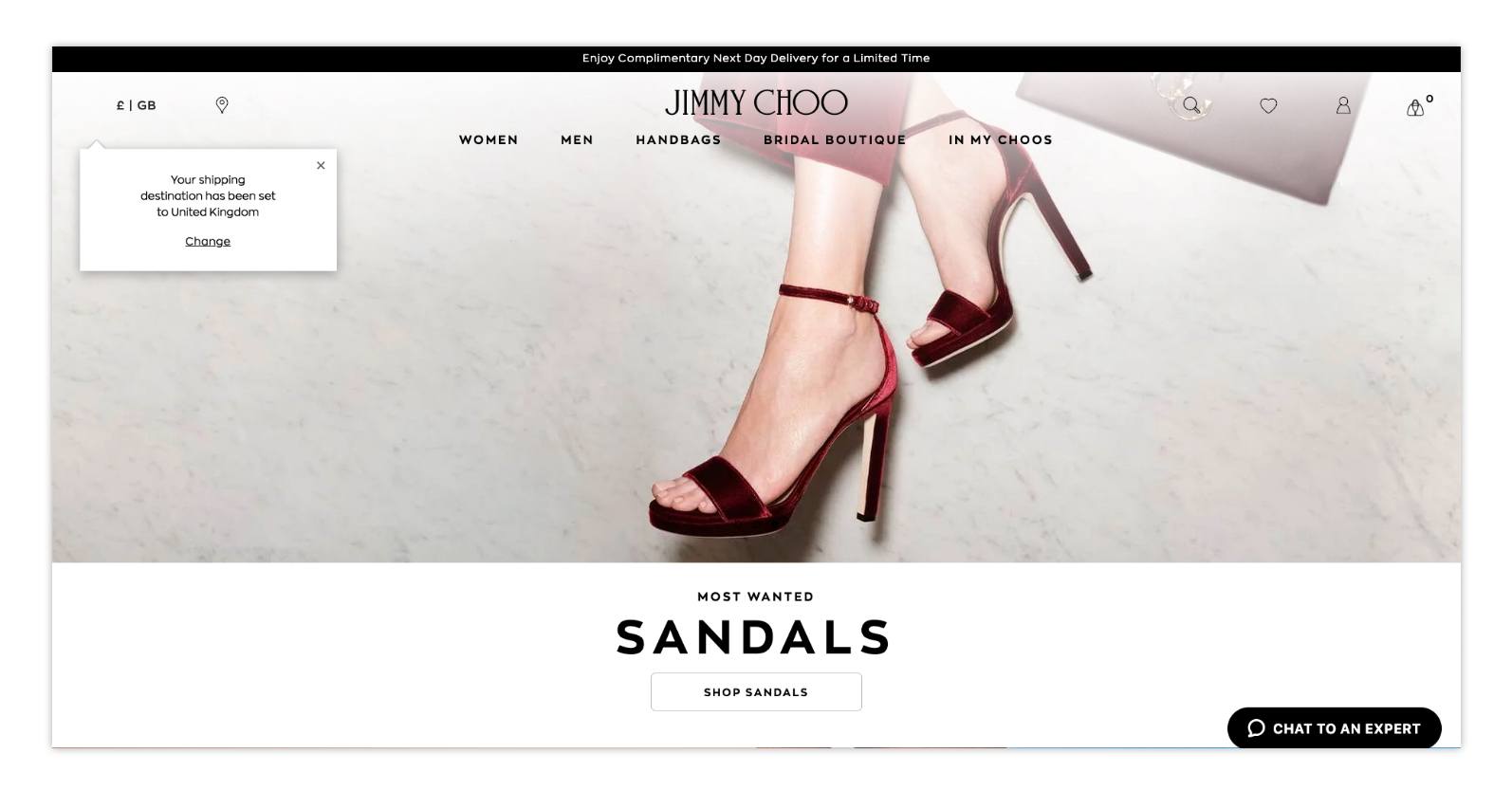
By automatically configuring the user’s location, Jimmy Choo avoids unnecessary pain at the checkout.
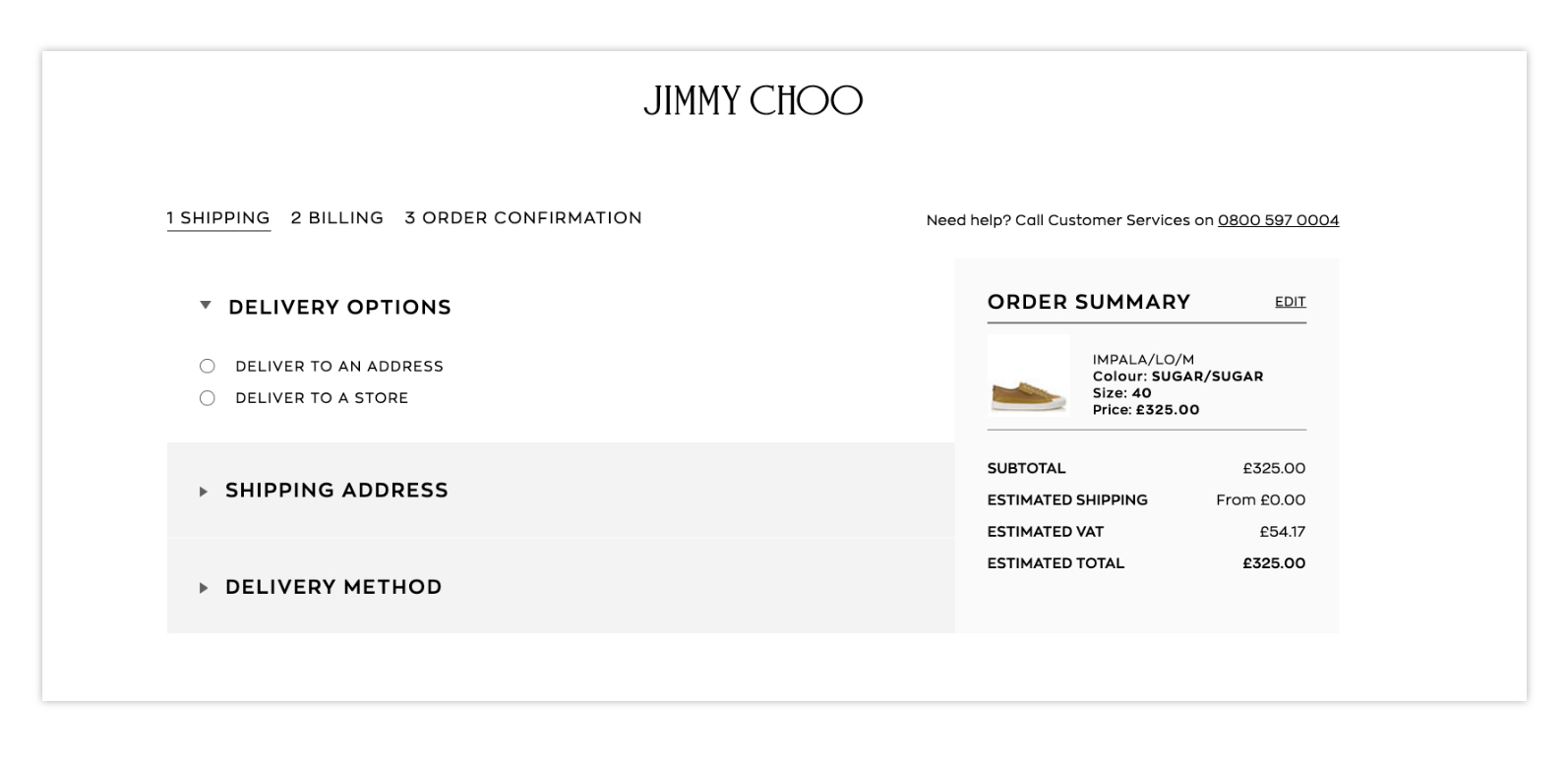
An easy way to make use of your user’s location is to use Google Tag Manager to set up a location-based cookie and then apply dynamic text to your page.
Alternatively, there are Shopify apps and ecommerce tools that help you apply geolocation and personalise your website.
The design of Checkout Pages is another common reason for cart abandonment. In fact, there are plenty of case studies showing how large eCommerce companies can increase conversion rates by around 30% simply by optimising their checkout.
The best policy is a test-and-learn approach to optimising your pages. However, there are some principles that seem to hold true:
- Requiring fewer fields is usually better
- A simple interface reduces anxiety
- Trust signs are essential (including an SSL certificate)
- Progress bars, summaries and field anchors make a page easier to use
Doubt, confusion and difficulty are all forms of “Friction“, the resistance that prevents customers from completing a process. When a user is presented with one of these kinds of obstacle, they will often simply give up.
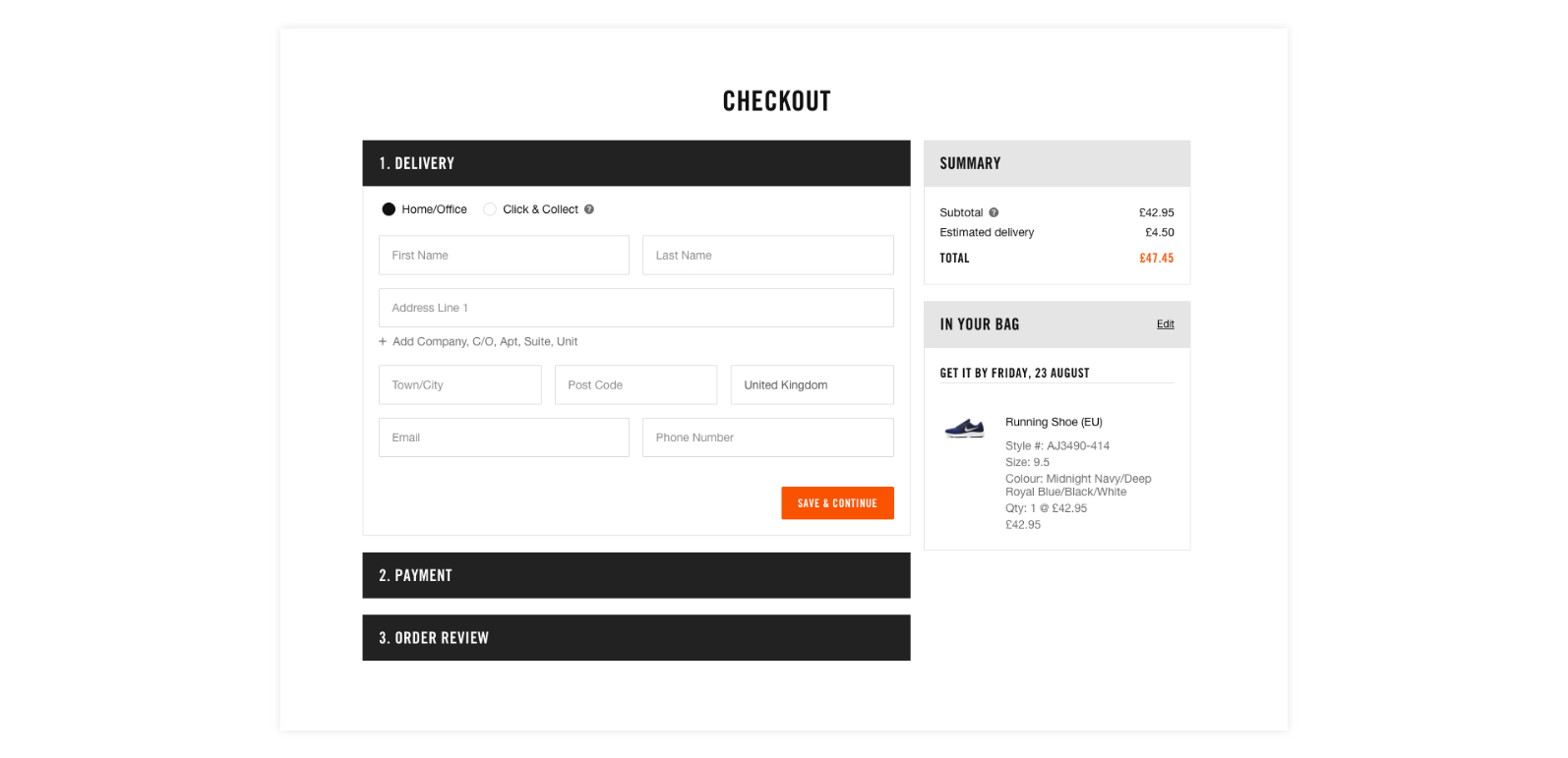
By splitting the payment process into three sections and highlighting key elements with colour, this online business reduces Friction at the checkout.
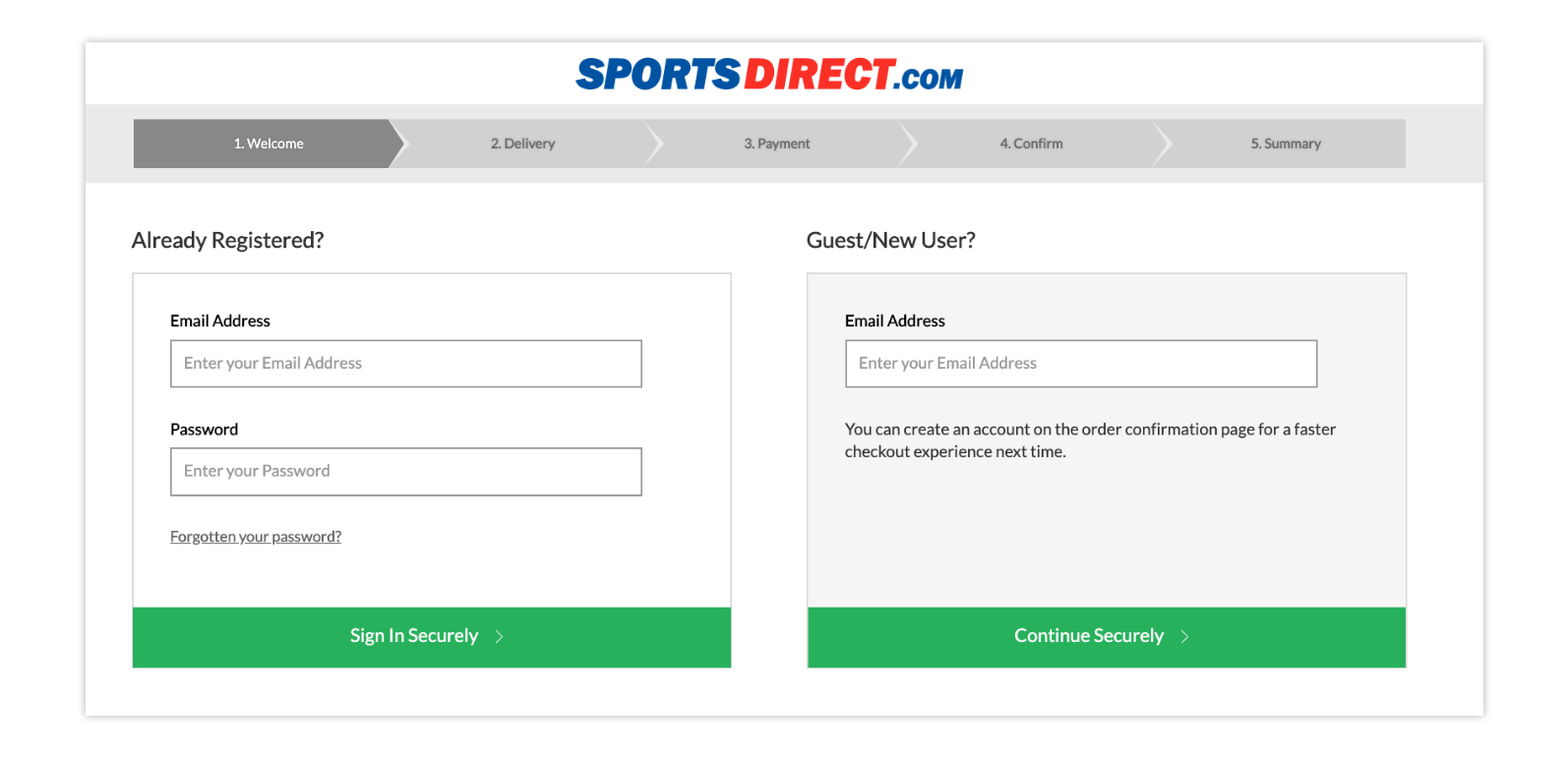
This page is impressively simple, and it includes a progress bar at the top to encourage users to complete the process. The buttons at the bottom of the form “Prime” a user with a feeling of security – two stages before their credit card information is requested.
The internet is a world of seemingly infinite options. In these circumstances, it’s hard to commit to a single option. However, if you can stop people from wondering what else is available, or worrying about a small feature, it should reduce your cart abandonment rate.
There are a few easy ways to address any doubts your customers have. This process starts from the first interaction you have with a customer…
- Offer generous warranties and highlight your returns policy
- Show customer ratings, reviews and testimonials
- Use surveys to identify what your customers want, then explain how you can give it to them
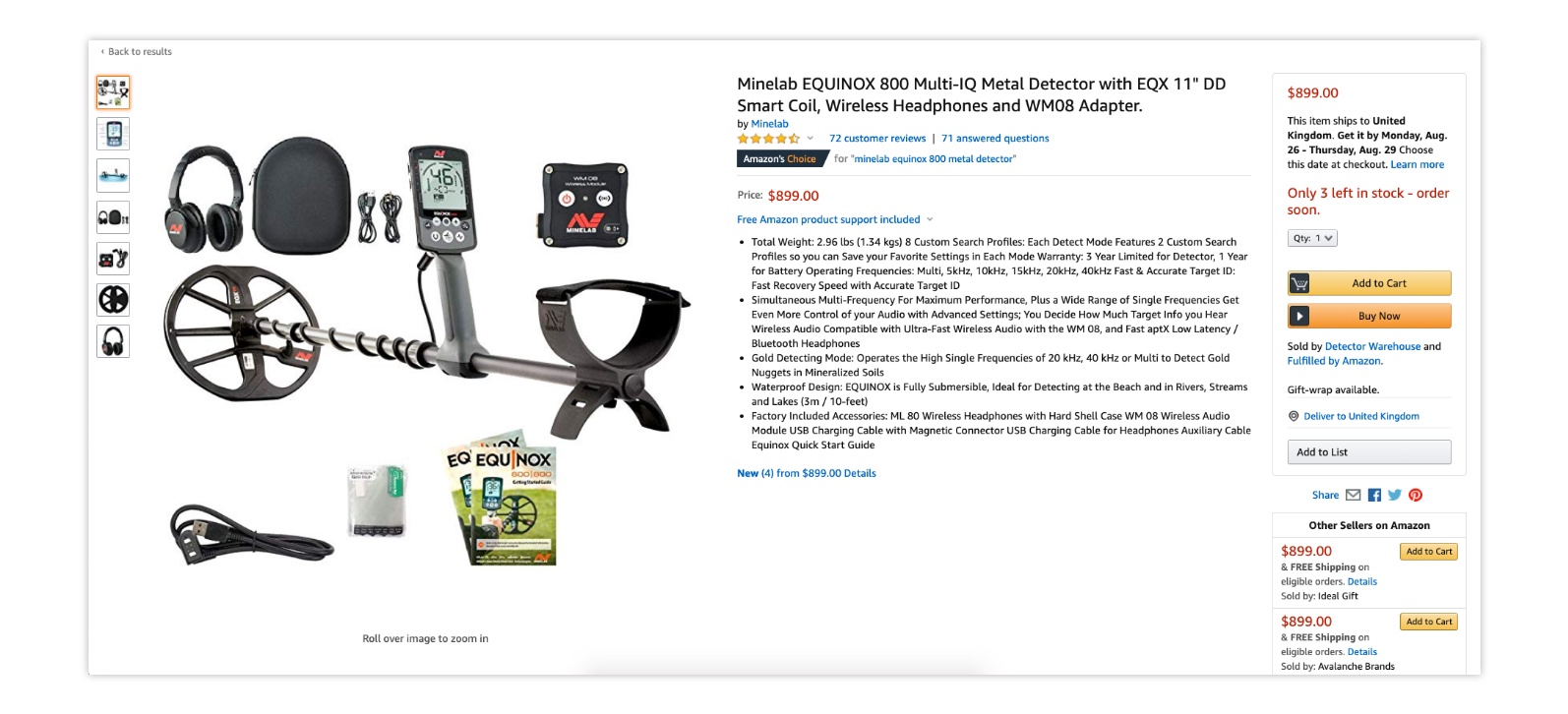
This product page might not be beautiful, but it shows a customer everything they want to know about the product. It also displays an impressive number of reviews and endorsements, so a customer knows they can trust the seller.
Whilst you can’t completely remove the distraction that comes with limitless choice, you can reduce it by displaying the right information.
- Create a price-match policy and display it clearly
- Collect endorsements that show your products are best-in-class
- Add a time condition to your offers to create urgency
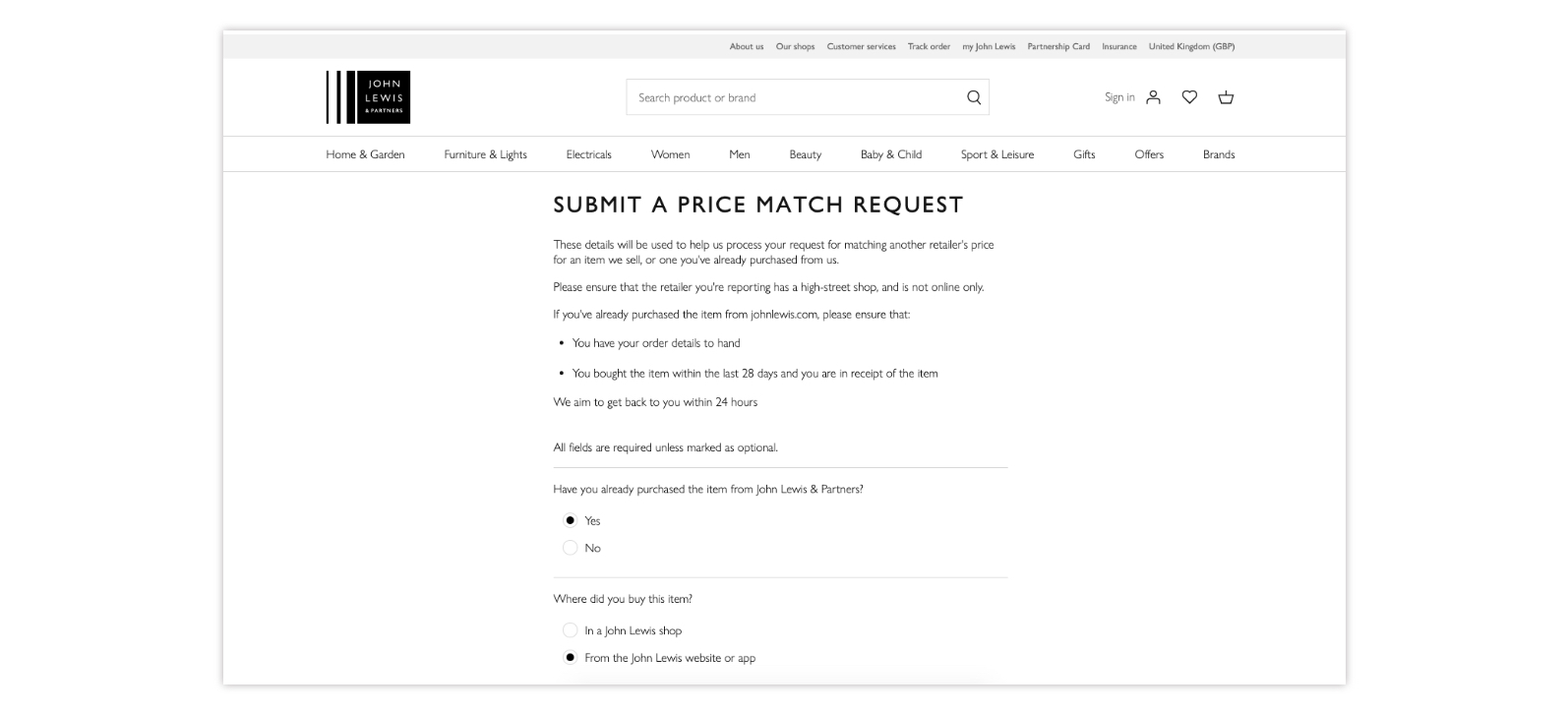
The distracting feeling that there might be a cheaper deal available elsewhere is particularly damaging for luxury brands and high-end stores. Creating a price match policy is an easy way to reduce the cart abandonment rate for a premium retailer.
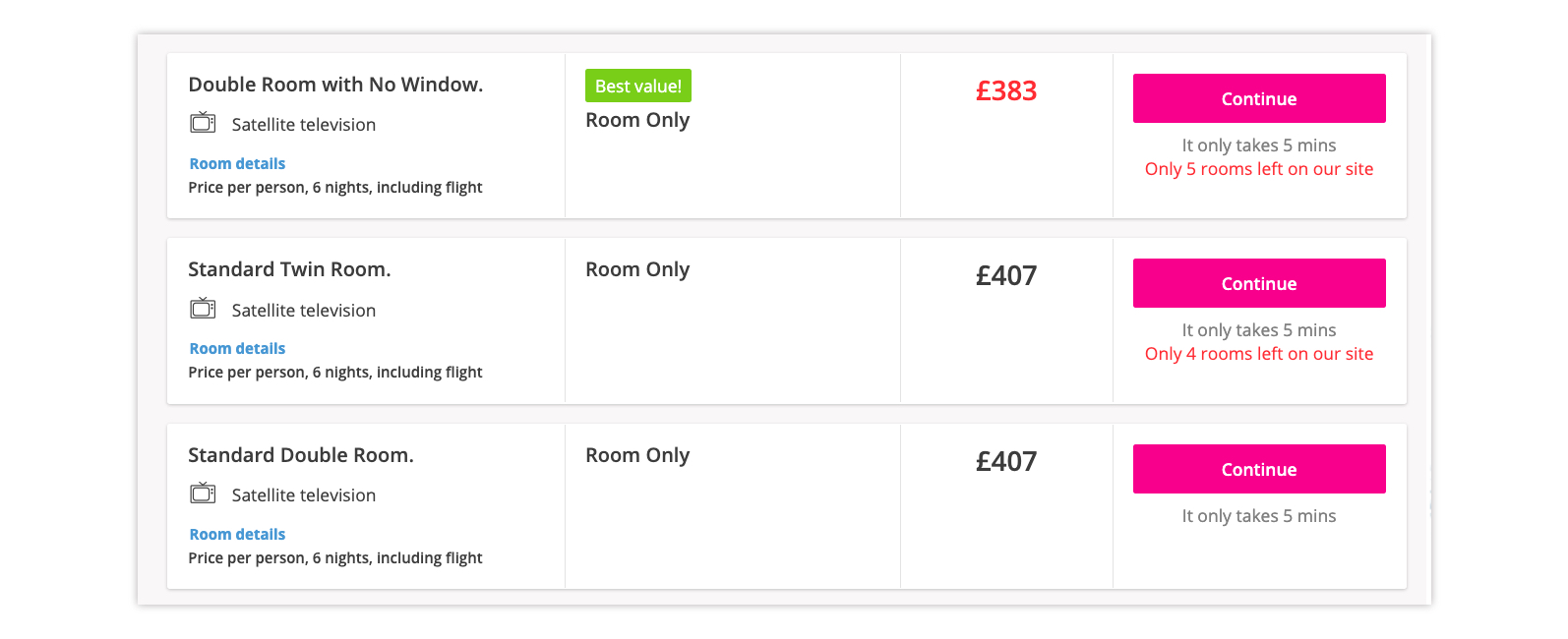
Booking websites rely on customers taking action early. To encourage people to book, these websites use urgency features such as countdown timers.
There are a number of simple psychological effects that make a customer feel attached to a particular item. By engineering your sales process to encourage this connection, you can reduce your Shopify cart abandonment rate more effectively.
Trigger Loss aversion
In a 1981 paper published in the Quarterly Journal of Economics, the psychologists Daniel Kahneman and Amos Tversky highlighted an irrational bias that has a significant effect on most financial transactions. The paper “Loss Aversion in Risk-less Choice” suggested that the experience of losing something is about twice as powerful as the experience of gaining the same amount.
This is one reason why so many products come with a free trial. Having to give something up, when the trial ends, feels more significant than the possibility of gaining something for the same price.
So, how can you use loss aversion before a customer has made a purchase?
Even the language you use can make customers feel like they own your products. Instead of describing “some oranges” or just “shopping cart”, describing them as “your oranges” and “your cart” to foster an emotional connection.
Use Implicit Egotism
In the mid 1980s, psychologists began to study people’s instinctive preference for names, places and things that match their own identities. For example, most people have a bias towards those of the same age, gender and social position as themselves. People also gravitate to information that is “salient” (things that apply to them and their situation). Viewers often prefer to watch local news, even though the stories may not affect them any more than national news.
In 2002, this effect was given the name “Implicit Egotism” in a paper published in the Journal of Personality and Social Psychology.
A powerful way to use the Egotism effect is to augment the online customer experience with personalised features, such as:
- Personalised product recommendations “people who bought this also bought…” (you can easily add these to an eCommerce site with a WooCommerce or Shopify Plugin.)
- Retargeting emails and push notifications. These can be tailored to your users’ preferences in a way that helps to earn their trust.
Provide Choice Closure
Between adding an item to their basket and paying for it, most consumers experience some degree of anxiety about their choice. This uncertainty can even lead to cart abandonment. One way to avoid this is to provide Choice Closure.
A 2013 study by Botti and Faro at the London Business School showed that the simple “Acts of Closure” (such as closing a menu after making a decision) increased their subjects’ overall satisfaction with their choices.
A simple way to recreate “Acts of Closure” online is to reassure customers they have made a good choice with a positive Add-to-Cart message. This is most effective if you combine it with an element of Social Proof.
Use Social Proof.
Social Proof occurs when our decisions are shaped by the choices and behaviour of those around us. Because it is so difficult to prove how good your products are without a customer seeing them, Social Proof marketing has become an essential part of eCommerce. Social proof is nothing new. For many years, it’s been used by both online and offline marketers to persuade prospects and increase sales. Simply put, the principle of social proof refers to the influence of other people’s actions on our behavior. Meaning, when a large number of people are doing something, we assume that it must be the correct action. Leveraging this principle cleverly, many online stores use social proof on their websites and in their emails. Some of the common social proof ideas could be the following:.
- Star ratings
- Customer reviews
- Expert endorsements
- Realtime sales counter popups
- Realtime conversion counter popups
- Realtime live visitors counter popups.
However, most of these are only used on product pages. With Websitestoolz the #1 Social Proof tool you can add different kinds of Social Proof to your basket and checkout pages, you can reassure customers that they are making the right choice.
WebsitesToolz comes with a variety of upto 24 different widgets and social proof tools. Customize the background, icons, display and triggers as per your own choice. This social proof software tool stands out in terms of the customizations you can have. You can create notifications that look and sound exactly how you want them to, without a developer and without a single line of code.
Create manual and realtime social proof popup notifications. Customise the title and description of the popup notifications in a language of your choice. Show popups when somebody signs up, adds something to a cart or makes a purchase on any website including wordpress, wix, squarespace, shopify or woocommerce store. you can show realtime paypal and stripe transactons as popups on your website. Integrate with over 1000 applications using Zapier or webhooks.
Key Features:
- Product notifications: Create FOMO with number of people who have purchased a product.
- Video Popups: Build credibility and trust by showing youtube video testimonial popups on your website.
- Recent Activity: Show a live feed of manual and realtime activity happening on your site right now.
WebsitesToolz Pricing
WebsitesToolz pricing starts at $6.99/month ( and $5.5/month when billed annually) for up to 50,000 notifications impressions per month. This is definitely the best deal in the market considering all the customisations and features loaded. Do checkout this recent blog post “Unlock Your Ecommerce Sales Potential with Social Proof Popups.”

